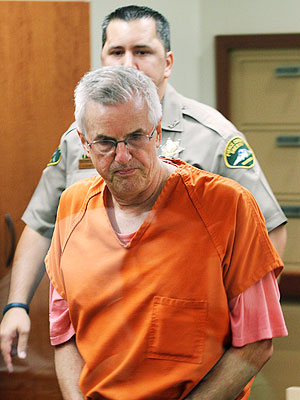SAN FRANCISCO/NEW YORK (Reuters) – Apple Inc plans to move some production of Macintosh computers to the United States from China next year, Chief Executive Tim Cook said in remarks published on Thursday, in what could be a important test of the nascent comeback in U.S. electronics manufacturing.
Apple makes the majority of its products, from Macs to the iPhone and iPad, in China, the world’s factory floor for electronics. But like other U.S. corporations, it has come under fire for relying on low-cost Asian labor and contributing to the decline of the U.S. manufacturing sector.
Cook did not say which Macintosh products will be produced in the United States. But the effort is expected to go well beyond simple final assembly of devices, with Apple and unnamed partners building most or all of the components in the United States as well.
The company will spend more than $ 100 million on the U.S. manufacturing initiative, Cook said in an interview with Bloomberg Businessweek, published on Thursday.
“This doesn’t mean that Apple will do it ourselves, but we’ll be working with people and we’ll be investing our money,” Cook said.
He told NBC’s “Rock Center” program, in an interview to be aired later Thursday, that only one of the existing Mac product lines would be manufactured exclusively in the United States.
Apple declined to comment beyond the interview.
Apple’s decision, hailed by some analysts as an important first step even if it affected a tiny fraction of its overall output, was dismissed by others who saw it as an opportunistic public relations ploy with little effect on jobs.
Some Apple suppliers were struggling to assess its impact.
“At the end of the day, Apple knows moving production to the U.S. means lower profits for Apple,” said a senior executive at Taiwan’s Quanta Computer Inc who declined to be named because of the companies’ business relationship.
“If Apple is really serious about moving production to the U.S., they would need to invest 10 times or even 100 times of that amount. We see only a minor impact on Apple suppliers.”
Cross Research analyst Shannon Cross said it made sense for Apple to bring some manufacturing back to the United States, because some components were already being produced there.
Also, while cheaper labor costs have been a key factor in encouraging U.S. manufacturers to move production to China, wages and other costs have risen sharply – particularly in the main coastal manufacturing centers. Labor costs, moreover, account for only a tiny portion of overall expenses: the research firm iSupply says the total cost, including labor, for final manufacturing of an iPhone 5 is just $ 8.
Experts estimate that the total base cost of all components that go into the gadget, or bill of materials, comes to around $ 200.
Cross pointed to other potential benefits of U.S. manufacturing, including mitigating the risk of intellectual property theft.
Cook has said in the past that he would like to see more of the company’s products assembled back home, but declining U.S. manufacturing expertise made that difficult. Apple makes applications processors for the iPad and iPhone via Samsung Electronics in Austin, Texas, and sources glass for the same devices from a Corning facility in Kentucky.
IHS iSuppli, a research firm that tracks supply chains, said the company now outsources production of notebook personal computers to Taiwan’s Quanta Inc and Foxconn, which also makes the iPhone and iPad, and Pegatron Corp. Foxconn and Quanta have U.S. facilities.
“Apple’s move appears to be a symbolic effort to help improve its public image, which has been battered in recent years by reports of labor issues at its contract manufacturing partners in Asia,” Craig Stice, senior principal analyst for computer systems at His. “However, given Apple’s high profile in the market, the company’s ‘insourcing’ initiative could compel other companies to follow suit and transfer production to the United States over the next few years.”
Apple’s stock rose 1.6 percent on Thursday, a tepid bounceback from Wednesday’s 6.4 percent dive that was its biggest single-day loss in almost four years.
MAKING STRIDES
Analysts say the stock, which has fallen steadily since September, has come under pressure from investors worried about the rapidly intensifying competition from Google Inc’s Android products.
Samsung, in particular, has emerged as a formidable competitor, chipping away at Apple’s dominance in the tablet market and leading the smartphone pack in China, where the U.S. company’s smartphone market ranking fell to No. 6 in the third quarter from No. 4 in the previous three months, research outfit IDC estimates.
Samsung’s stock has climbed 8 percent since the end of September.
Apple’s domestic manufacturing effort will likely buy the brand some goodwill at home, where the debate about off-shoring has heated up as the economy sputters along. It has also come under fire for excessive working hours and dismal conditions at Foxconn’s plants in China, and critics have accused Apple of helping to create a high-stress environment for migrant workers.
Beyond the marketing boost, some analysts said Apple could blaze a trail should it prove that American manufacturing of electronics can be profitable.
“It seems to me like a nice time for Apple to do something,” Gartner analyst Carolina Milanesi said. “If it can be a profitable business, and others follow, then Apple has shown the way.”
Others were skeptical that Apple’s latest move was much more than a symbolic gesture.
“Such a strategy has been used by other companies in the past, which had no actual impact on their outsourcing,” said Li Qiang, director of New York-based China Labor Watch, in an emailed statement.
“The key question is how many jobs (percentage of the entire workforce) and what kind of jobs (production or administration) are to be moved back. I don’t think Apple is ready to relocate a large percentage of its production jobs back to U.S.”
Earlier this year, Google made waves when it announced it would build its Nexus Q home entertainment streaming device – deemed by many analysts to be an experimental product – in the heart of Silicon Valley. Google said it hoped to speed up innovation on the device and improve time-to-market.
Lenovo Group Ltd – China’s largest PC maker – said this year it will move a limited amount of computer manufacturing to North Carolina, to be closer to the market.
“Lenovo’s announcement appears to have flown under the radar,” said Jeffrey Wu, senior analyst for OEM research at IHS.
“Apple is a company that is always in the spotlight, and the company’s image sets the standard in the PC world. If Apple is doing it, will others follow?”
(Additional reporting by Faith Hung in TAIPEI, Lucy Hornby in BEIJING and Lee Chyen Yee in HONG KONG; Editing by Maureen Bavdek, Richard Chang and Ken Wills)
Tech News Headlines – Yahoo! News

























